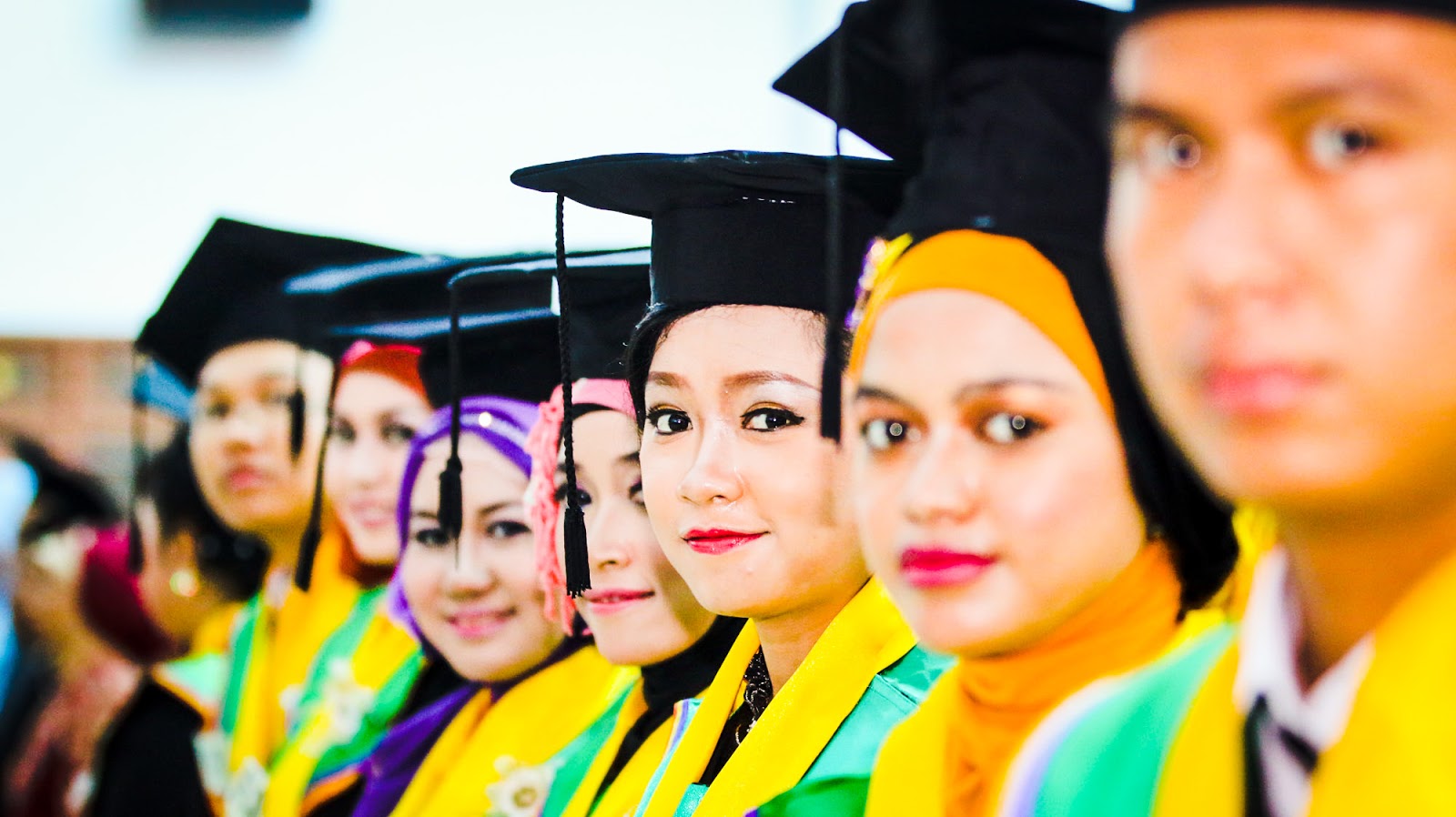Indonesia’s higher education degree structure is defined in a logical numerical hierarchy. It includes credentials called Sarjana at the undergraduate level (Sarjana Strata 1 – S1), graduate level (Sarjana Strata Dua – S2, commonly called Magister), and doctoral level (Sarjana Strata 3 – S3, commonly called Doktor). In addition, there are graduate-level specialization programs (Specialis 1 and Specialis 2) in professional disciplines like medicine, as well as four levels of vocationally oriented diploma programs (D-I, D-II, D-III to D-IV or just D1, D2, D3, and D4)).
Undergraduate Degree (Sarjana 1)
S1 undergraduate programs in standard academic disciplines usually last four years (eight semesters) after upper-secondary school. They typically require the completion of 144 to 150 credit units of course work and a thesis. Curricula are mostly specialized apart from some mandatory general education subjects, such as religion, national history, and Pancasila (Indonesian state philosophy). Credentials awarded include Sarjana Sains (degree in science), Sarjana Ilmu Sosial (degree in social sciences), or Sarjana Ilma Komputer (degree in computer science), and so on.
Magister (Sarjana 2)
S2 Magister programs are relatively new in Indonesia and were not established on a larger scale until the beginning of the 1990s, initially only at public institutions. They are typically two years (four semesters) in length and involve 36 to 50 credit units, as well as the preparation of a thesis or completion of a graduation project. Admission usually requires an S1 degree in a related discipline with a minimum GPA of 2.5 (on a 4-point scale), but entrance examinations and demonstrated English language abilities may also be required. Some S2 programs are taught in English. Credentials awarded include the Magister Sains, (Master of Science), Magister Teknik (Master of Technology), or Magister Humaniora (Master of Humanities), and so on.
Doktor (Sarjana 3)
The Doktor is a research qualification that represents the highest academic credential in the Indonesian system. Programs are a minimum of three years, but usually take longer to complete. Curricula typically include some course work at the onset of the program, a comprehensive examination, and the preparation and defense of a dissertation. Entry is based on an S2 degree with high grades, but top students may also be allowed to enter on the basis of an S1 undergraduate degree, in which case they may have to complete additional course work.
Diploma Programs (Diploma 1 to Diploma 4)
Diploma programs are offered in vocational fields at a variety of institutions. These employment-geared programs can take from one year (D1) to four years of study (D4) to complete; the numbers 1 to 4 correspond to both the level of complexity and the nominal length of study (although programs may also be completed in more or less time). The D4 is pegged at the same level as the S1 Sarjana in the Indonesian qualifications framework. Credentials awarded at this level may sometimes also be called Sarjana Sains Terapan (degree in applied science). Students may transfer from Diploma programs into academic Sarjana programs and at some institutions may be admitted into S2 Magister programs in related disciplines.
Source: WENR



0 Comments